











With a commendable contribution from IIT Kharagpur’s noted alumnus (1967) Mr.Vinod Gupta, founder-chairman of infoUSA, the Vinod Gupta School of Management was established with a mission to develop outstanding management professionals capable of playing leadership roles in their chosen careers in organizations across different sectors of the economy. Some of the areas where VGSoMites have excelled are technology-driven & knowledge-based industries that are characterized by a high degree of globalization, dynamism, complexity and innovation. The school boasts of highly qualified faculty with a considerable academic and industrial experience and strong associated faculty of sister departments. As a result, the institute has a healthy student-faculty ratio. Being a part of a large and vibrant academic community, the management students have the opportunity to participate in a wide range of extra-curricular activities and develop managerial and leadership capabilities. A modern and aesthetically designed building, well-equipped computer laboratory, exclusive library with books in all functional areas of management and an atmosphere conducive to learning are some of the specialities of the school.
The Marketing & Advertising Club (MAD) of VGSoM is focused on keeping our students updated about the latest trends in marketing & sales dynamics. We thrive on upgrading the marketing sentiment in budding managers by enriching them with current & upcoming trends through newsletters, quizzes, case study competitions, and various other events. Our Club hosts activities for students such as Leader’s challenge, Thinkvent, ADMAD, Venalicium, etc., to keep the participants interested in marketing. We also engage with marketing enthusiasts across the country by means of social media handles and posting articles on recent trends. Digital workshops, a new initiative started by our Club, provide students with market research, required skill sets, & in-depth market analyses. The MAD Club publishes an annual magazine, Madazine, that grasps the gist of the marketing space by compiling views of market leaders. It features bits from leaders in the marketing & sales domain from various companies, interviews of multiple industry stalwarts, & articles on marketing & management trends. Venalicium - pan IIT business quiz event, Tagmad- an online tagline event to promote creativity, Kotlergiri - a fun-filled event, & Marquee - a webinar series started for students of our college to bring industry exposure to students by creating interaction with people occupying high stature in the sales department of market leaders are directed towards enlightening students to the marketing world.

The world has just returned to normalcy after being rocked by the COVID-19 pandemic, but the industrial scene has completely changed. Customer demands have changed dramatically in recent years, and businesses are facing this shift Industries have had to adjust their marketing strategies to keep up with dynamic changes in customer preferences We are pleased to publish the MADAZINE this year with the theme "Personalization: The Next Marketing Paradigm". This year's theme focuses on how marketing as a whole is moving from focusing on mass audiences to focusing on self-expression within the individual and the nuances that come with it. This magazine features interviews with industry leaders on the topic of personalization. Their wisdom, perspectives, and thoughts on the current market are presented. Besides the exclusive interviews, this magazine also includes analyses of 4 trending ads, the top articles from our exclusive article writing contest, fun marketing puzzles, and a collection of our MAD events during the academic year. We are grateful to the entire VGSoM faculty and student body for making the publication of this MADAZINE a smooth and rewarding process. We would like to thank Dr. Kusam Sudhakar Reddy, our Dean, Dr. V N Achutha Naikan, our former Dean, and Dr Biplab Dutta, our faculty coordinator, for their unwavering support and guidance. We sincerely thank all the participants of the article writing competition as well as our interview subjects, who took time out of their busy schedules to share their valuable perspectives Finally, we'd like to express our gratitude to everyone who helped in making the Madazine 2022 a big success.
Cheers,





Mr Tarun Jha is a seasoned Marketing professional with more than two decades of experience in the marketing Field Currently serving as the Head of Marketing at ŠKODA AUTO India, providing strategic direction for the brand ŠKODA and managing the marketing efforts along with the team

Many congratulations for receiving the “Most Influential Marketing Leader Award” at the World Marketing Congress. We would love to know what has
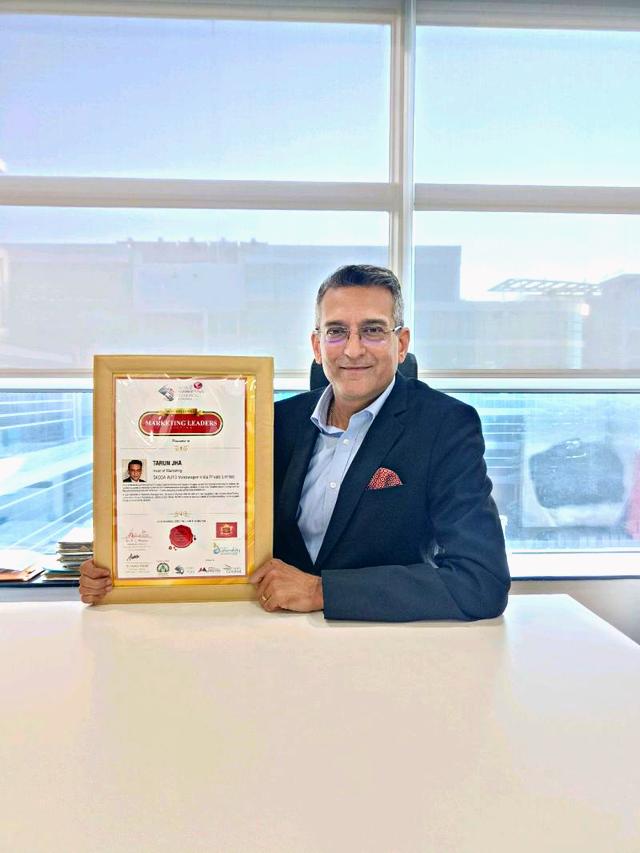
been your mantra for success? Also, what piece of advice would you like to give to students aspiring to take up leadership roles in the marketing domain?
I believe that this achievement is the collective effort of everyone that led to such effective work done for the brand. It’s not only the captain that leads the team in cricket, it’s the entire team of 11 players which makes the win possible. So I attribute this success to everybody I have worked with, which includes my team at ŠKODA India and the agencies. The agencies significantly contribute to bringing up new ideas and executing them systematically. Our job as ŠKODA India is recognizing the right ideas and facilitating, which translates into a winning feat.
I am just lucky to go onto the stage to receive the award on behalf of everybody for their commendable work on the brand recently.
Having said that, you asked me what is the mantra for success, I would like to say that although everybody has a different path, there are certain aspects in life that don’t change. I have seen them work for me as well as a lot of other people. I extend those aspects as advice for people, hoping that it provides the desired outcome. For young people, at the very beginning of their careers, my advice would be to be very, very curious! I tell people of even my age to have that hunger to know more The day one believes that he/she knows everything, that’s the end of you. The real Intelligence lies in admitting that I don’t know and I would like to learn more. This first step of admittance shows the hunger you have to learn much more.
A good, intelligent person is always a work in progress. Young people who secure admissions into good colleges and secure good marks assume that they have proved their mettle, however, that is just the beginning of the road, don’t stop there! Utilize the platform and improve your skills to make yourself more intelligent.
The second aspect which doesn’t have any alternative is a discipline in life. As a professional, we must have discipline in work and personal life.
An undisciplined person is a scattered person, who leads to reduced efficiency and difficulty in working along with other people.
Third important thing is that there are no shortcuts in life, there might be a few exceptions to it, but for the majority, it’s a long marathon that has to be endured. You might reach the finishing point slightly late or earlier than other but it is critical to keep running to reach the final point.
Being an international brand, what different criteria does ŠKODA consider when marketing in India versus the other countries?
The interesting part is that at the very core, our vision, purpose, and brand values remain the same globally. The point of difference arises in the market scenarios. In the stage of maturity and development as an automotive market, we are very different from Western Europe, which is extremely advanced and developed, or even the US or China. The second aspect is the behavior and type of the Indian audiences, for which we cluster them into different milieus. The principle of clustering applies to all global markets as well. However, the clusters, that exist in India are very different. One example is the traditional merchants' cluster which doesn’t exist in Europe at all. India is home to a very large segment of traditional merchants who buy cars and we have to study and fine-tune our marketing
approach to reach out to them. The other critical aspect is how we utilize media because consumption habits are quite unique and varying. The Internet provides the most effective means of information, being the cheapest and largest data source. The usage patterns across various social media platforms in India is enormous and people are stuck on their mobile phone for hours.
There is also a very stark difference between European and Indian customers. Europe is a big replacement market where people already own car(s) and are looking for their next buy whereas India comprises of the growing middle class which has a lot of first-time buyers.
So, when you design a car one has to keep the needs of the Indian customers in mind because the be all and end all of my marketing is actually my product itself.
How do you tackle the superstitions in India for not buying during certain periods or black as a color isn’t preferred?
our business but it’s not only the first-party data or new customer data that becomes our primary interest. The massive database of our existing customers is essential to our business and this dataset is huge considering how long we have been in business. In the automotive sector, repeat business is very important. The automotive sector runs on long-term relationships instead of a simple transactional deals like other commodities. Hence, customer loyalty is a big factor so data management becomes important which is done in a very ethical, honest and genuine way.
The day you believe that you know everything, that’s the end of you.
The real Intelligence lies in admitting that I don’t know and I would like to learn more.
The independent ownership, status, and prestige are key behavioral aspects in Indian markets. As compared to the functional market of Europe, India revolves around emotional buying. Thus, marketing has to be centric around it, which also includes the entire product definition as a part of it. The features equipped in the car should be as per the Indian roads and the driving patterns. Lane assist and proximity sensing are great features in Europe, However, in India where the road markings are still developing, traffic congestion may hinder proximity sensors' working.
We have a customer base of young people who are venturing into new businesses as well as the corporate world which surely takes interest in the black variant, but we keep the percentage low in our portfolio as the majority prefers other variants. Now, for certain periods like Shraad there is a lull in deliveries/putting money on the table but not in inquiry generation and information collection. Car buying isn’t an impulsive business where the products can be selected, picked, and taken like the second sale of shoes or garments. The customer buying cycle starts much earlier with research for days, weeks, or even months. So the lull periods provide a great time to subtly be around to provide the first overture to customers by utilizing the right kind of advertising: be it videos on YouTube, personalized emails, and many more.
But yes, we have to be very, very aware of all these cultural nuances like festivals on a day-to-day basis, language restrictions, or usage of languages.
Personalized marketing involves a lot of data gathering and analyzing. How can brands deliver curated options and wonderful experiences to customers by using personalization ethically?
ŠKODA as a European brand is governed by GDPR rights. So without the customers explicit permission or consent we will not target or send out a message. We are certainly careful as a part of global compliance. Data is definitely crucial for
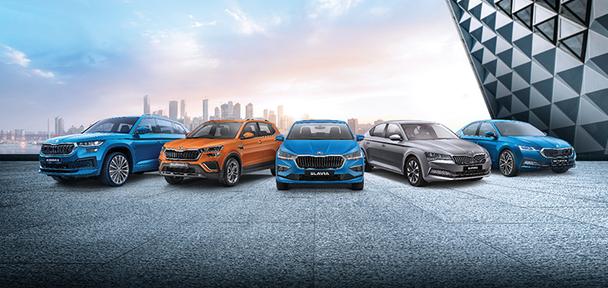
Over the past year worldwide semiconductor chip shortage had an adverse effect on the automobile industry. Despite that ŠKODA AUTO achieved its all-time sales peak in India in September 2022. What marketing improvisations the company undertook in this challenging period to gain such a market response?
We were in a slightly unique position globally because we had two new launches which contributed towards boosting sales. We had the Kushaq last year and the Slavia this year. Launching a new model has a long project cycle starting from conceiving to design to production, so we were reasonably well prepared to face that challenge. However, almost every automotive brand including our own parent company faced many challenges due to the semiconductor issues. We won’t say that we were not affected but we managed the situation through sound planning and foresight.
The augmented reality integrated via the use of Instagram application is a very unique experience for the customer. Can we expect more such collaborations with social media platforms? According to you, how important a role is social media likely to play in the consumer buying process in the years to come?
We have tied up with many platforms in past be it AR effects on Instagram, racing games on Twitter, or being the first automobile company to open a brand store on Flipkart. We try to be the first on every platform as we think of ourselves as a young brand even though we are 127 years old. Although the young audience may not be in a position to buy a car today,
it is important to stay in touch and stay relevant as we want them to see us as a smart, young, fresh-thinking brand that resonates with them whenever they decide to buy a car. Social media is a very important driver in our marketing mix as it has become a very important part of our consumers' daily lives enabling them to read news, entertain, party, and stay in touch with friends and family. The content part of social media is richer than a newspaper in the sense that it is more engaging and understandable. Moreover, with today’s tools, one can focus and target the content on social media towards the right consumers much better based on age, location, lifestyle, etc. Thus, it has become essential for all brands to be present there.
The ownership experience comprising of after sales-service and maintenance cost of a car is a major factor in the consumer buying decision. Could you please share some of the key considerations while launching ŠKODA “Peace of Mind” campaign to address this factor?
Multiple kinds of research have found that there is a bit of trust deficit in the minds of consumers when it comes to buying an automobile. Since it’s an expensive product people are apprehensive that once they buy a car if the relationship ends then the ownership might become a nightmare. So, what we did was we picked up such pain points of the customers, found solutions to address them, and bundled all of them under the “peace of mind” program. The communication line is the essence of this program which is “Peace of mind comes standard with a ŠKODA”.
We have a dedicated website for this program where we have highlighted how we deliver peace of mind at every stage be it safety, finance, cheaper spare parts, a huge network across the country, AIenabled chatbots, etc. Earlier people used to believe that buying a European brand would mean the whole ownership experience would be very expensive but we have worked towards changing this misconception. We have a feature called a service cost calculator on our website where customers can enter their car details and get an accurate estimate before going to the service station. Such transparency provides assurance to the customers.
ŠKODA Kushaq has achieved a perfect 5star NCAP rating in adult and child safety and is branded as India's safest family car. What were the strategies behind deciding and properly conveying such positioning of the car?
This was not a marketing strategy as such as this has been a brand truth for ŠKODA and the newest car has delivered on the same promise and truth. All our European cars such as Superb, Kodiaq, Octavia, and Fabia are Euro NCAP 5 stars. So, when we started building cars for India in India one thing was very clear we cannot compromise on quality and our cars would be at par with the cars that come out of Europe. Designing a 5-star safety rating car is a very expensive business proposition as one needs good quality steel, good quality construction, and other safety features but we keep on investing because we believe that ŠKODA customers buy quality and safety. We feel that all Indian customers have started to realize how important this is and safety

has become a deciding factor in choosing a car. The government is getting stricter with norms on airbags, and seatbelts and soon there will be Bharat NCAP. You see there is a movement and we as a brand have always stood for it. Through product research, we found that most of our buyers are family-oriented people who want to ensure that everybody in the family is safe. Therefore, we were delighted to be awarded as the first car to get a 5-star NCAP rating both for adult and child safety in India.
Metaverse is arguably the biggest buzzword in 2022. Metaverse marketing is touted to be the next-gen digital marketing where individuals will have a real and 3D experience. When do you see this happening and how is your organization preparing for it?
ŠKODA has already launched Skodaverse and work is in progress at the headquarters to enhance the metaverse experience. To be honest the exact business applications of this metaverse are still under development globally. Also, there are certain products and services where it is logical and easier to apply, such as gaming for instance. For a brickand-mortar business like ours where the product is all about touch and feel it is a little more difficult to give that product experience online on the metaverse. People buy a car based on many physical manifestations and attributes such as comfort, ride, power, thrill, and handling which makes our category very different. We at ŠKODA have partnered with many agencies and hired many technologists who are working especially on these projects.
Source: https://www facebook com/SkodaIndia


We asked: Customers love personalized products as it makes them feel different and unique. However, one's concern in today’s data privacy age is that companies are using customer data for personalized marketing. Is this ethical?

today’s digitalized world, more information is being generated than ever and companies want that information to be processed in such a way that it can benefit them and their customers as well But the key issue is that information being used also includes customers’ data. It depends on the moral perspective of the individual to deem it ethical or not Generally, a company or app takes all necessary permissions beforehand for certain data they require, and it is up to the company, how they are going to use the data. Technically, the company has taken all permissions from you and has all authority to make use of the data to send personalized ads as they wish but how far a company goes to use, analyze or mine your given data? Customers may feel that just because they gave certain permissions for some files doesn’t mean that they can be used in whatever way they want Customer expects a boundary between their personal life and company ads targeting him/her. This boundary will decide what is ethical and what is not ethical This imaginary boundary varies from customer to customer, demographic to demographic, etc. A company must carefully assess the customer base they are targeting and limit the personalization based on their personal threshold to accept personalization. For example,
customer’s permission. If you collect their information without permission or sell data without notification you can be held legally liable You are also likely to lose customer faith and business. Even though it does not mean that you need to repeatedly ask for permission to collect or use data, it does mean that you need to be upfront about data collection and use with your customers Another major risk posed by storing customer data is the security issue. We have seen numerous cyber-attacks on companies where confidential customer data was stolen by hackers Who should we hold responsible for such a case? The hackers or the companies promising their security to data? When a company promises its customers that
BISAWARUP GHOSH PROFESSOR, VGSOM, IIT KGP MARKETING, ECONOMICS AND STRATEGY
"Ethics is knowing the difference between what you have a right to do and what is right to do."
-Potter stewart
a person who frequently watches movies expects more personalization so that he can get better recommendations, but a person may not like personalized ads from his bank or related companies as he/she may not be comfortable with third-parties knowing his/her bank transactions Companies should plan carefully about what type of customers they target and what type of data they should collect. When you collect and store personal information about customers it is your responsibility to ensure that this information remains private and is only used with the
their data is secure with them and fails to live up to it, isn’t it breaking the customers’ trust? Company using its customers’ data should also take responsibility for securing the data. Companies should deal carefully with customers. Once they feel that they are being watched and being bombarded with insignificant things they will disassociate themselves from the company. This is the negative of personalization In these days of increasing usage of the personalized marketing, companies need to be transparent with their customer base about how data is being used and assure them that their data is not being sold to
third parties. As discussed, there is a fine line between ethical and unethical personalized marketing, but it is up to the company how far they push it It is very crucial that the company is doing the due diligence on their customers and data privacy laws keeping the following considerations in mind: 1) Maintain Data Compliance 2) Establish Data Transparency 3) Practice what you preach When companies become more transparent, it becomes easier for customers to understand what data they should provide, as they can understand how it will be used
DR.personalized experiences and products are the new way forward that many companies and brands are adopting and seeing successful results. Customers love getting unique offerings from their favorite brands and the brands in question, themselves try to innovate and disrupt traditional practices Ethics by definition relates to the concept of moral correctness in making choices. With the growth in personalized marketing, the amount of data collected by various companies of individuals is mind-boggling With these vast amounts of personal data comes the question of privacy, security, storage, IP rights, accountability, and ethical usage Customers feel more concerned about the extent to which their data is monitored and, to whom they are shared and the impact of potential data security breaches on their private life Organizations aiming to provide a personalized experience also have to ensure that the pursuit of this goal must be in line with morally ethical practices.
For providing customized offerings, organizations gather data that serve the purpose However, it becomes absolutely essential that the customers are aware of exactly what information they are voluntarily disclosing and for what purpose and it is an added responsibility of the company to ensure the same After all, as joyful as receiving a personalized offering is, equivalently distressing is being bombarded with attention from sources that use your data without you signing up for the same The balance indeed is very fine-edged

The real trick for marketers should be to ask for minimal data from the customer, with which they can meet their ask So it really boils down to managing the ‘ask’ by the marketers and using advanced AI tools to extract useful information from a minimal data set. This will make this a win-win for both marketers and customers

"Stay Hungry, Stay Foolish" -Steve Jobs
customer data for personalized marketing can be considered ethical as long as the data is obtained and used in a fair and transparent manner and, most importantly, with the customer's consent Personalization is a powerful tool for providing relevant and targeted messages to customers; this enhances the customer experience and builds trust in the brand These messages are tailormade for the customers with the help of the data acquired from them
This data should be used with utmost caution, keeping in mind the privacy rights of the customers. We have to keep a check on, as a company, how far is one ready to go with these targeted ads, if the customers get a sense that too much of their information is prodded into, it is detrimental to the trust that they have in the brand, and can make the brand lose the most loyal customers and not to forget the legal issues that might ensue There are several laws that govern the use of customer data, and companies have to be mindful of them In addition to these general principles, the Space Manufacturing industry is subject to several other regulations and standards related to data protection It is essential to adhere to those industry-specific standards while governing the handling of the sensitive information regarding space travel or other technical matters Apart from sticking to the rule book, a company can take some measures while using the customer data for customizing the product They can clearly communicate to the customer
how and for what purpose is the data going to be utilized, making the customer aware of how the data is stored and secured. Limiting the data that is obtained from the customer and gathering only what is necessary Last but not the least, since the customer has entrusted their data to us it is indispensable that we secure it for them using robust measures such as encryption, secure servers, and taking regular backups Satellite companies are turning to cloud to create digital operation centers or transit their existing operations.
Cloud capabilities like high performance computing helps engineers streamline satellite design, development, and simulation, which allows them to continue development of their product and testing from anywhere

"Reimagining Rocket Propulsion for the future; Launch more frequently, affordably and quickly"
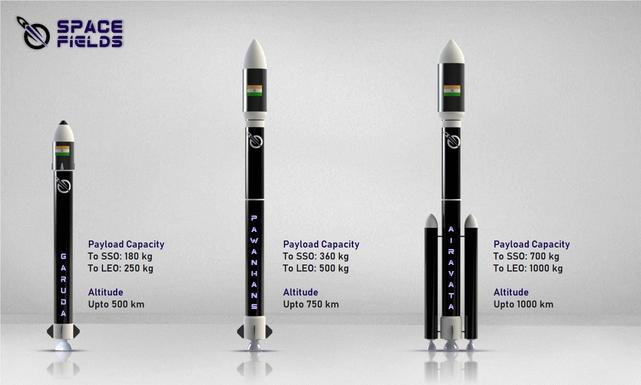
There has been a lot of focus on technology innovation in Space infrastructure in recent times, owing to the realization that beyond launching satellites, we need to have better infrastructure to reap the real benefits from all that data these satellites collect
Thus by taking the correct measures, care and staying well within the accepted limits, collecting customer details for personalization definitely bears no cross


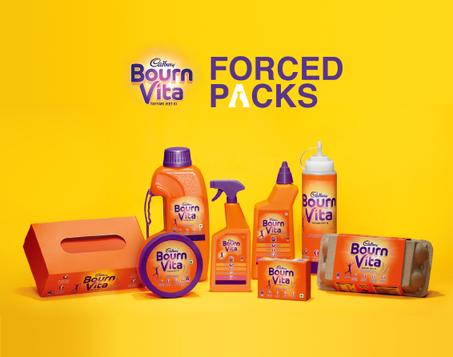
You might have heard of the term ‘Guerilla marketing’ It is described in textbooks as a strategy for driving publicity and brand awareness using unconventional techniques of promotion intended to inspire surprise, awe, or shock In this article, we will discuss how Cadbury Bournvita recently used guerilla marketing to good effect
Cadbury Bournvita debuted in 1948 and is among India's most trusted malted drink brands Since the last decade, the brand has focused on campaigns around a central theme of progressive parenting and preparation with its tagline #TayyariJeetKi This year, Cadbury aimed to do something audacious and partnered with Ogilvy India to launch its ad campaign #FaithNotForce In the ad, the iconic Bournvita jars were replaced by other household items such as toilet cleaner, egg boxes, tissue paper boxes, ketchup bottles, soap boxes, and cooking oil bottles, having their branding and labels on them They partnered with Star Bazaar to feature these avatars in their select stores and capture shoppers’ reactions in real-time The ad campaign was launched on Children’s Day to garner maximum support from society for the cause The messages on the packaging were intended to help parents draw a comparison to instances in which children are also made to follow predetermined paths that may be successful for others but may not fully realize each child's potential Usually, their ads are focused on capturing the children's attention but this time their entire focus was on the parents. They aimed to educate parents through the advertisement so that they would recognize and support their children's true talents instead of forcing a predetermined career path on them. It was indeed an integrated marketing communication involving front-page advertisements in newspapers, social media, and influencer partnerships. They had a niche way of incorporating day-to-day items that potential parents tend to use and labeled them with their usual design causing them to stop and take a deep look into them. It stood out due to its unique presentation of a potent social message and received positive feedback from across the country.

Tech giant Apple's Series 7 smartwatch went on sale in October 2021 On January 1, 2022, a commercial, featuring the sounds of actual 911 calls made through the gadget was released to advertise its unique ability to call emergency services It highlights the capability of the Apple Watches to save lives in grave danger

The advertisement revolves around three people, Amanda, Jim, and Jason, who saved their lives by calling 911 using an Apple watch Each participant seemed anxious and scared at first in the video However, as soon as they speak with emergency operators, they start to sound less nervous since they know they will get help The first call comes from a woman whose car had flipped due to an accident and had started filling with water The second involves a paddle boarder carried out to sea by the strong wind The third is a farmer who fell 21 feet and broke his leg The one-minute video created in-house at Apple pans through three different landscapes: a sea, a road bordered by water, and a farmhouse Each shot is accompanied by audio of emergency recordings of people caught in life-or-death situations One unique aspect of this advertisement is that neither the product nor the survivors are shown in any way With the line, "With the help of their watch, Jason, Jim, and Amanda were saved in minutes," Apple concludes the video In the video description, they said, "These are just three of many incredible stories where people were able to get help using Apple Watch " This advertising campaign was launched months after a video went viral showing an Apple watch helping a guy who was knocked unconscious in a bike accident This advertisement is the polar opposite of the regular advertisements Apple tends to do where their technical supremacy, aesthetic appeal, and new-age development get the spotlight and screen time But, this time they have created the advertisements to show how Apple can be an integral part of peoples' lives. Apple has consistently been creating noteworthy advertisements, and even now, they successfully instilled in us that using an Apple watch is not just a style statement but also a wholesome product possessing multitudes of utilities.




In 2016, Barclay’s sent out personalized videos to their premium clients in the UK via e extremely data-driven targeted email marketing technique was deployed in order to conn nurture their existing client base The video starts with a write-up that greets the client by and proposes to help them if they need to increase their loan

The video goes on to feature a woman who refers to the client’s name and walks around suggesting the kind of things the client would like to do and how a Barclays loan could help with it. As the write-up fades out, the woman is seen walking in a vegetable market. She begins by saying, “If the client has plans, Barclays can help bring them to life” and since the company is aware of the client’s financials, they can let the client know how much they can borrow before they apply. At this point, the exact figure of the loan amount that can be offered to the client based on a review of their account and the existing loan amount is displayed. The video then transitions to the woman walking across a car with the client’s name, Clare, on the number plate and here the woman says if the client is interested in buying a new car, the loan could also help with that Walking ahead, two people are seen carrying a couch in the background, while the woman says that the loan can also help get the client’s home improvement plans off the ground, and the camera zooms in on a nameplate that reads “Clare’s Cottage” Then the woman is seen walking across a person struggling to walk multiple dogs together as she says that the client can use the loan amount to keep all their other open balances under control “in one easy-to-manage monthly payment” Finally, she suggests that if the client chooses to apply through their online services or the mobile app, the money can be instantly transferred into their Barclays account To see how much they could be paying monthly, they can look at the email under this video By repeatedly referring to the client’s name, the video gives the feeling of being bespoke, thus making the customer feel special These highly personalized and targeted videos boost the customer experience, it is also informative, and fun and lets the client know how the services of Barclays can be utilized to their full potential
 Source: youtube.com
Source: youtube.com
The 1994 advertisement for Dairy milk was a huge success, it was just the right combination of risk and innovation that paid off It showed a male cricketer who is batting at 99 runs and hitting a powerful shot It is perceived as a lost case but the ball just lands across the boundary This brings delight into the eyes of the girl sitting in the stadium biting at the chocolate and praying to the almighty

She hugs her friend sitting beside her and runs towards the field as soon as the scoreboard shows six. She runs past the security and dances in the most beautifully euphoric manner. At the last, both the cricketer and her girlfriend share Cadbury Dairy Milk to rejoice at the moment. Dairy milk is a popular brand for children however the advertisement changed the perception and shifted (rather expanded) the target market to adults. This helped increase the customer base and break the notion that chocolates are only to be relished by children. The advertisement was differentiated on a very critical aspect: it broke the stereotypical image of a woman by portraying a young lady dancing to her own beats and rejoicing as compared to conventionally acceptable portrayals The Cadbury film showed ladies and gents in their Sunday best, sitting appropriately, and the final dance broke the mirage Thus, stepping away from defined behavioral standards as a calm and composed woman It also had a shift from the trending in-yourface approach to the product being shown in glimpses throughout the ad Years later, in Sep 2021, the same ad was reinvented with a role reversal, a boy is seen praying while biting a Cadbury bar and her girlfriend is on the field hitting the final winning stroke It brought in a new perception to the famous classic ad and showed how we are progressing towards a gender-neutral society The redefined narrative clicked with the younger generation as well as provided a magical twist to the nostalgic adult viewers who had seen the 1994 ad This ad campaign “Asli Swaad Zindagi Ka” placed the brand into the hearts of people and helped in developing strong connections
Fun fact: The dancing shot for the 1994 ad with actress Sophiya Haque was completed in the first take itself



The very definition of modern-day marketing has been furnished and directed through a single tap of any digital device. From grocery to entrance examinations to banking, and more, the online setup has resulted in a reformative state which is witnessed to have binary outcomes – it has either connected the missing dots and made the process handier or have been exigent for people in terms of operating and plummeting traditional methods of pitching. Speaking in terms of how impactful the changeover had been, the postulation of one-stop solutions has revolutionized the pattern of targeting the potential set of customers as well as eradicated the unnecessary fatigue of door-to-door marketing/sales and given a touch of personalized and more welcoming in terms of their offerings/services.
While the world advances further in the advent of technology, marketing has fruitfully grown from the basic 4Ps/Cs and word-of-mouth to influencer marketing, trial and error as well as syncing a ‘need’ based pitch to the community. The introduction of metaverse in the market has given brands and people a new channel to connect and build. Though augmented, the unexpected yet overwhelming response has become an impetus to pull maximum customers through physical experience.
The dynamic changeover of the system has created a paradigm of owning more towards customer centricity and inculcate the feedback of the society and return them with utmost care and wholesomeness – in advent of postulating a channel of customization and retention process over the period of time.
 Source: gartner com
Source: gartner com
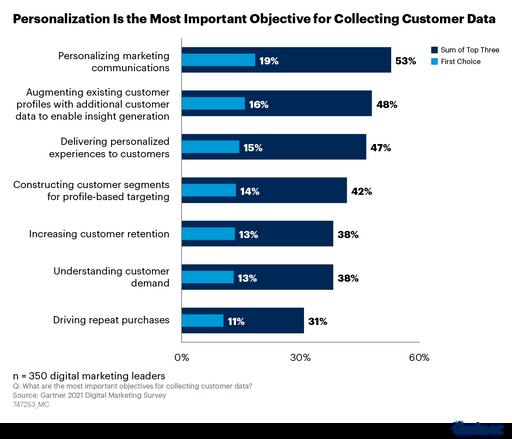
From the Indian market point of view, in order to encapsulate and trigger the buying emotion amongst the customers here, there are two salient factors which play a key driving force – Drama and Delivery.
The factors hold true irrespective of the medium of marketing. In the current period, advertisements in social media platforms like Instagram, Meta and YouTube have been fast growing as compared to traditional methods of radio, newspaper and TV. Apart from the online factor, it’s the correct targeted age group in such social media platforms, with a synced payment option, which leads to impulsive buying by the youth. However, it also results into vehement criticism, if the products/services fail to match their expectation. Also, there exists a certain degree of personality power which either upshots or plummets the stock price or any cryptocurrency rate in no-time. This could be considered as a concoction of guerrilla and influential marketing, where ‘tweets’ or 'actions’ lead to turmoil in the global market. An anecdote could be Ronaldo's post-match press conference, where he knowingly removed Coca-Cola’s bottle from his desk and brought water instead into display. And, its shebang could be explicitly seen in the following day, where its share price and public response both gravitated. Here, the display of personalized ‘connect’ with the player resulted in a ramified condition of a leading beverage company. Therefore, its quintessential for such companies to intact their brand ambassadors and craft a holistic approach for building further. While we talked about sustaining a method to attract customers organically, the material filtered could only be channelized if the person has strong affiliation towards the brand or crossovers through its community. Therefore, the engagement segment becomes the crux

of the process as the current and future growth depends on the number of people reacting to it. However, rather than just reacting to it, relating to the content shown/displayed would emphasize the customer towards the brand/product and eventually end up buying it.
In today’s context, the brands are more than just products and services. An epitome could be Johnson & Johnson’s method to become a ‘caretaker’ for a woman since her teenage till she delivers a baby. Their website also upholds a list of names for babies, giving a personal touch to its customers.
"Changeover of the system have created a paradigm of owning more towards customer centricity"


Talk of the metaverse has been ubiquitous since December 2021 when Mark Zuckerberg rebranded Facebook as Meta and declared his ambition to “help bring metaverse to life.” Within a month, the tech giant Microsoft’s proposed acquisition of gaming giant Activision also paved “the path for metaverse” With the race to adopt metaverse just starting off among brands, researchers have tried to define and decode metaverse in multiple ways. Metaverse is best defined as an evolution of Web 2.0 which enables us to get immersed in instead of something we look at physically. For marketers, the metaverse represents an opportunity to engage consumers in entirely new ways while creating a lifelong experience for them; thus, giving their brand a new dimension and position among customers.
Studies have shown that in 2021, metaverse related companies had raised $10 billion, more than twice as much as they did in the previous year. This proves that to succeed in the new digital and virtual world, a business will have to deploy an effective metaverse marketing strategy that will suit the needs of the customer thus providing them the same kind of satisfaction. It is imperative for a brand to concentrate on user experience, scalability and differentiate themselves from other by using metaverse to market their products and services. Although the world of metaverse is new to most of the brands, many are trying to adopt it to differentiate themselves and use it
to drive business growth by creating world class customer experience. In many ways, the critical elements of marketing in the metaverse resemble those of designing authentic and compelling brand experiences in the traditional world. However, the application of the elements in a metaverse will be different. With many brands competing against each other to provide the best value to their customers, the strategy to effectively engage customers in Metaverse will require its own evolving recipe for success. Keeping in mind the upcoming technological enhancements and ever-changing customer needs, let us talk about some unique metaverse marketing strategies.
Brand Marketing and Engagement are more consumerled.
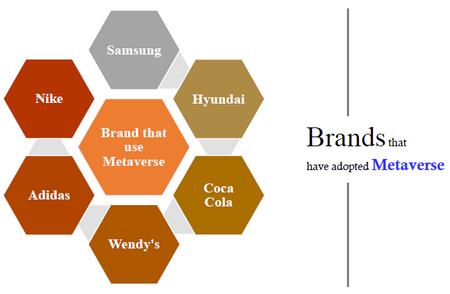
In recent years, influencer marketing has witnessed a lot of growth. According to a McKinsey Report, more than 50% increase in influencer marketing can be seen in platforms like WeChat, Pinduoduo in China, YouTube and Instagram in the western world. This shift aligns well with the metaverse as a brand influencer can use their “avatars” to create more engaging content which will help get the potential customers a feel of how exactly the product will look like.
With Gen Z consumers in their mid-20s, they are more familiar with virtual worlds, transactions and goods that previous generations aren't. Gaming leads the way; 67% of Roblox’s 50 million daily users are under the age of 16, which proves that a whole new generation of metaverse natives have already arrived.
When a company is going to step into the meta world, the management is expected to ask itself the reason for being a part of meta-marketing. The goal should not be to match the competitor but to spark innovation in the marketing team. The motive should be to increase awareness among new audiences, position the brand and create great customer experiences. Proper identification of goals and aligning it with the requirements of the customers and then delivering it with the help of metaverse will help companies add a new dimension to themselves.
A customer always sees brands in the metaverse as innovative, so the expectation of providing quality products or services is high. The skateboarding retailer Vans launched “Vans World” on Roblox last year. To drive brand awareness and reach to the core demographics, Vans enabled visitors to virtually explore skate sites with friends. This has engaged existing and new customers and received 48 million visitors. It is also crucial for the brand to have right mix of the native marketing and meta-marketing strategies.
The immersive environment of the metaverse is not just an opportunity for consumer-facing companies but another channel to market their products and service. In this section let us try to discover and analyze how the existing brands are taking small steps to coin a new term called meta-branding. For companies still waiting at the dig out it is important for each brand to find its place and balance the risk-reward equation. There are
plenty of brands that have taken full advantage of the gaming part of metaverse by integrating their own platforms with the metaverse. Let’s us get a practical exposure of how exactly things have been planned by these well-known brands.
Source: phdassistance.com
Hyundai has already set its foot in the digital automotive experience on Roblox with its participation in the metaverse. In campaigning for the company’s latest initiatives for sustainability, Hyundai targeted the tech savvy population and joined hands with Roblox for Hyundai Mobility Adventure. The metaverse introduced customers to the thrills of driving and the brand’s advocacy for sustainable transportation. According to the report from Bloomberg, Hyundai aims to innovate relationships with young people by strengthening their virtual customer experience content. The company has also shared plans to continue to use the metaverse platform for communication of Hyundai’s new vehicles.
Source: hyundai com

In November 2021, Nike launched NIKELAND, a simulated world where visitors can play and indulge in a lifestyle centered on sport and play. Expanding its market to a metaverse platform allows Nike to get engaged with their products and services. One can even customize one’s avatar and dress them up in NIKE gear showcased in the game outfit collection. Nike’s strategy to tap the young age group is aligned with integrating their platform with metaverse which is a different form of gaming world.
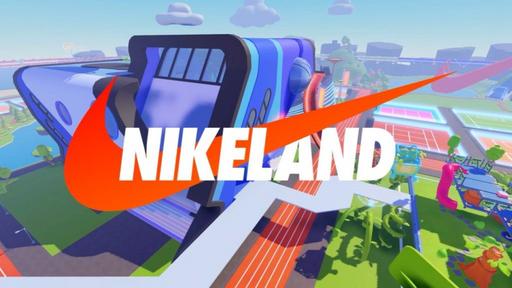 Source: kurdo org
Source: kurdo org
Coca-Cola, the famous beverage company has put its foot forward in the metaverse space. Committed to building friendships with the power of coke, Coca Cola launched an NFT collection with OpenSea. The Coca Cola friendship Loot Box started during the celebration of International Friendship Day in 2021. According to Oana Vlad, global senior brand director, Coca Cola trademark, they had seen this International Friendship Day as the perfect occasion to lay their hands on NFTs and metaverse.

Many researchers are concerned that with the emergence of metaverse as a strong platform to promote the products or services, the traditional marketing tools will lose their value. The article tries to differ from that point of view and tries to propose that metaverse is here to stay. However, this does not guarantee the fact that the traditional branding tools will lose their value. The tools that will be employed by business depend upon the customers whom it is targeting, the value proposition it offers and many more. It is not possible for every small business to step into the metaverse platform. The number of metaverse platform providing is very few in India and globally which means a huge financial burden for the companies. Business which believes that going to metaverse will help them to boost up their top line and bottom line should definitely start taking steps toward metaverse adoption. From IKEA launching its new app called IKEA PLACE, where customers could try out the furniture for their room without going to the furniture store or even worrying whether the furniture will fit in the designated place, metaverse has become the new renaissance of the media and advertisement industry.
 Source: In December 2021, athletic brand NIKE acquired RTFKT, a studio specializing in avatar accessories and NFT sneakers
Source: In December 2021, athletic brand NIKE acquired RTFKT, a studio specializing in avatar accessories and NFT sneakers
NIKE
Source: In December 2021, athletic brand NIKE acquired RTFKT, a studio specializing in avatar accessories and NFT sneakers
Source: In December 2021, athletic brand NIKE acquired RTFKT, a studio specializing in avatar accessories and NFT sneakers
NIKE
"It requires its own evolving recipe for success"
"This does not guarantee the fact that the traditional branding tools will lose their value"Source: hyundaimotorgroup.com Source: trendhunter com
 Jaluvadi Eswar Jagdish Sheth School of Managemen
Jaluvadi Eswar Jagdish Sheth School of Managemen


In today’s world influencer marketing has become a very vital form of marketing tool used by marketers, Marketers today find influencer marketing as an efficient tool to outreach their product to newer and larger audiences or customers. Influencer marketing is a type of marketing in which a brand will collaborate with an online influencer to market one of its products or services. Although it may seem as if there is a lot of
pertinence between influencer marketing and normal advertisements as both use an individual to promote their products there is a great deal of difference between the two. An influencer is a person who has the power to alter purchasing decisions because of his or her authority, knowledge, position, or relationship with his or her audience on social on social media platforms. An influencer will also have a distinct niche following with whom he actively engages, the size of the following also depends on the size of his or her topic of the niche. In influencer marketing, the popularity of the influencer plays a vital role because the viewership of the advertisement surges when the brand or product is marketed by a highly popular influencer, hence we can conclude that the influencer is more supreme than the brand. The trust his viewers have in his content would actually promote the brand rather than the brand in this type of marketing. Hence, we can see the clear difference between influencers and celebrities endorsing a brand which a number of traditional media have failed to understand. Influencer marketing is not a type of marketing strategy where you just find a famous influencer and provide him with money or exposure to promote your brand, it also depends on whether the influencer that you approach is doing content on the products or markets that you sell in. If you target influencers who do not do content on the type of products that you sell the viewer base
will be completely different and their followers might not even need your product hence if you promote it there, Then there will be no impact by these marketing strategies, Hence it is essential for you to choose the right influencer to endorse your product, where your product type and the type of content that he specializes must match for example if a mobile phone company has to sell their products they must use tech influencers to sell their products as people looking at his vlogs or posts will be the type of people who are searching for tech products.
NANO INFLUENCERS are the type of influencers who have a following ranging from 10000 or lower like the mommy blogger Lindsay Gallimore. These types of influencers have very small followings, The advantage of having these as your brand influencers is they have a closer relationship with the audience, their engagement rate is higher compared to other influencers, and also there is a perspective that people trust small influencers more, these influencers are most cost-effective, nano influencers will only promote brands that are relevant to their content category. Hence many brands will collaborate with NANO INFLUENCER brands. The most obvious drawback of the nano influencers will be the limited reach, majority of the nano influencers lack experience working with brands since these nano influencers are amateurs they might lack in the creation of high-quality content. Some of the brands that use nano marketing are- coca cola, glossier, amazon’s audible, and forever21.
MICRO-INFLUENCERS are influencers with 10000 to 100000 followers, like lifestyle blogger Sharon Mendelaoui. They have higher audience engagement when compared to nano influencing, these influencers have access to niche communities, they are also costeffective for smaller and upcoming brands, and these influencers are accessible to feedback and also willing to change. The disadvantages of micro-influencing are it may take considerable time to find the right microinfluencer, and these influencers also will have less reach. Some brands which use micro-influencers are Walmart and Daniel Washington.
MACRO INFLUENCERS are influencers who have followers in the range of 1,00,000 to 1 million followers, like food and travel creator Jean Lee. The advantages of using macro-influencers are they have a have a huge reach in social media as they cater to a large crowd, Macro influencers will be high on professionalism when they promote a product when brands are promoted using macro-influencers the brands are intended to be more exclusive The disadvantages of using macro influencers are lack of trust among the audience, they are costlier when compared to micro and nano, and there are chances the influencers might be inaccessible because they might be represented by talent managers, macro influencers might sometimes promote brands that they are irrelevant with thereby they won’t have much
knowledge about the product. The products which use macro influencers are GILLETTE, NETFLIX.
MEGA INFLUENCERS are influencers with followers like 1 million plus like Cristiano Ronaldo. Mega influencers can bring a lot of awareness, and mega influencers can also bring your brand a lot of credibility, the downside of using mega influencers is not many companies can afford them they are very costly, and it can also be very time-consuming and slow. The brands which use this type of marketing are Hershey’s, and PREGA NEWS.
The current trends show that the growth and popularity of influencer marketing are skyrocketing day by day According to several researchers, influencer marketing is the next big thing in marketing According to a recent study done by a social media management company HOOTSUITE about 72 5 percent of US marketers will use some type of influencer marketing which is actually a huge number This shows the growing importance influencer marketing currently has and also the growth in the future Influencer marketing is a type of marketing that gives hope to new and upcoming products to advertise in the market as an alternative to regular marketing which might be cost-effective for the new companies
Influencers are here to stay for a long time, wellcontacted influencers can be a very valuable asset for business, and also the perspective of having personal contact with the influencer also plays a major role in choosing them as our marketers In the end, we can say that the revenue obtained by influencer marketing will be more compared to the investments done in influencer marketing, as long as we collaborate with the right influencer and have the right digital marketing strategy
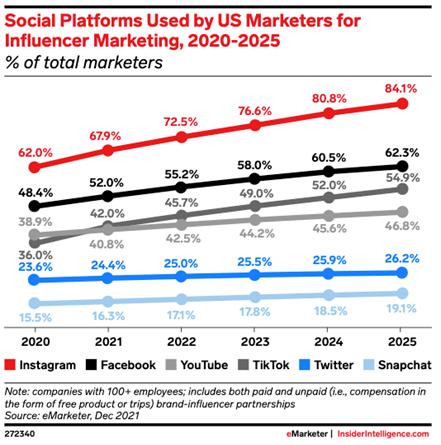


 By
By


How Adidas became synonymous to football?
Adolf (Adi) Dassler, a cobbler gave birth to the company in the small town of Herzogenaurach in Bavaria, Germany in 1949.
Due to his love of sports, Adi started experimenting with specialized athletic footwear. The football cleat produced by adidas in the 1950s was among its most nouvelle items. According to legends, West Germany's use of these cleats helped them win the 1954 World Cup in
Source: gameplan-a.comAdidas used to sponsor more than 60% of the international football teams in the 1990s. But in 2022, Nike has entered the scene and is offering fierce competition to Adidas, a brand that was once considered unbeatable when it came to football. How did this happen?


In January 1964, Bowerman & Knight established Nike, focusing first on less expensive but nonetheless high-quality substitutes for the market's dominant German brands, Adidas and Puma. The 1970 World Cup in Mexico served as the impetus for Nike to release their first football boot, but no players brought them. The iconic Nike swoosh initially appeared on the boot in the company's catalogue of footwear. The shoe started to degrade when the temperature dropped in the US because it was designed for warmer locations like Mexico. Because of this setback, Nike focused on other sports and didn't return to the football market for almost ten years.
unsuccessful attempt in Mexico in 1970, Nike was able to supply eight members of Brazil's World Cup-winning squad with the new Nike Tiempo Premier boot. Brazil were proclaimed champions in California. And thus began the Nike era with Phil Knight being the sponsor the national team. Nike featured the Brazil national team for their main advertising campaign prior to the 1998 World Cup in France , ''The Brazil national team killing time at the Airport''. On Ronaldo's feet, Nike unveiled its brand-new Mercurial boot in 1998, on the largest platform in football, in France. With Ronaldo being awarded the tournament's best player.
Bern, Switzerland. They had studs that could be removed or added depending on the ground and weighed half as much as the opponent's boots. It was a sporting event that was broadcasted on television to just about every country in the world, popularizing Adidas football shoes. Soon, Adidas became synonymous with football. They started producing tracksuits and clothing for athletes in the 60s.
Soon thereafter, they began producing balls. In 1970, Adidas gave FIFA the ball for the World Cup in Mexico and has continued to do so ever since. As television broadcasts of games became prominent, the TELSTAR ball was specifically created to display well on grayscale televisions, something that later came to be associated with football design.

Despite the fact that all other teams in Europe preferred Adidas & Puma, they signed their first English team, Aston Villa. With Aston Villa going on to dominate Europe while sporting Nike shoes, Nike couldn't have chosen a better team. In 1994, twenty-four years after their
In 2002, Nike signed Manchester United, one of the largest clubs in the world. Nike introduced its "secret tournament" campaign for the 2002 World Cup, and it became one of the most famous football marketing initiatives ever. Nike's "Write the Future" campaign, which became the most shared campaign on the internet in 2010, helped the company go viral once more. Presumed successor to Cristiano Ronaldo, Kylian Mbappe, a French wonderkid, inked a long-term contract with the sportswear company in 2017. Nike truly left its mark on football culture and came to ground with Adidas.


"Family Reunion" concept and included some of its most famous ambassadors, and released a film showing current Lionel Messi playing soccer with younger version of himself.
Argentina, sporting Adidas, has won the World Cup
Nike's shares increased by 4% after France (a Nike-sponsored team) won the FIFA World Cup in 2018 While Adidas suffered a 6% loss as a result of Germany's early elimination from the competition

The goal of World Cup advertisements has historically been to capture the atmosphere of the game and get people talking. Following the releases of the metaverse ad campaign, there was discussion on how, despite their desire to stand out, Nike and Adidas appeared to have developed the same concept.

"As a marketeer, I’d be finding that really awkward,” said Richard Adelsberg, CEO of the creative agency Ear to The Ground. “This is almost the first time when, weirdly, they look like they’ve done the same thing or gone with the same sort of campaign And in trying to be cutting edge, they look like they are behind the curve."
Nike is clearly more represented. But, things might change now as team
As a result, it will be interesting to observe how the shares of these two firms are impacted given that Argentina, whose squad was sponsored by Adidas, won the cup despite Nike having a significant advantage in terms of jerseys, teams, players, and boots Winning the cup might encourage more people to purchase jerseys, increasing brand sales Also, the more jerseys you buy, the more likely you are to buy shoes from the same brand to go with them
To sum up, Nike is the major brand champion on the field this year They didn't even have a single team competing in the 1990 World Cup After nearly a century of Adidas' domination, Nike has taken Adidas' place in 2022 Nike did win, but it wasn't as significant as it could have been Argentina and Messi deserve Adidas' gratitude Once more, their most significant ambassador succeeded The bosses of Nike and Adidas will already be looking to the future to identify the World Cup champions of 2026
"The time your game is most vulnerable is when you're ahead. Never let up."
- Rod LaverNIKE ad campaign FOOTBALL-VERSE for the Qatar World Cup 2022

Consumers are the centre of any business or brand, and how the business is perceived by their consumers relies on how the brand engages with them, to what extent can

the brands cater to the very specific and granular needs of their customers. Hyperpersonalization is the advanced and realtime customization of the offerings of the company, tailor-made to match the requirements of the customers at the granular levels.
A business identifies and profiles its customers both explicitly and implicitly in the digital age to achieve proper personalization. This is done by taking behavioral data into account as a new criterion, to gain insights into how customers or prospects can differ regarding their consumption habits. A new generation of technologies has enabled companies to collect and analyze data on a much larger scale to identify and characterize specific individuals. The companies can now reach out directly to specific customers and offer them tailored products or services, along with a personalized experience, as they optimize their techniques for gathering customer information. This results in a hyperpersonalized and hyper-contextualized customer experience.

In recent times in the domain of marketing, there has been a radical change from marketers going from being product centric to customer centric via the means of hyper-personalization. Naturally, businesses must better understand who their consumers are and what they want. Traditional segmentation techniques have become obsolete due to changes in customer behavior.
Traditional marketing teams have now come to realize that studying the consensus of the population does not yield the results they envision and it is of paramount importance to scrutinize the necessities and expectations of customers on an individual basis. Trying to accomplish these puts analyzing the customer’s usage habits on the internet as a priority, it is essential to continuously understand the context in which a customer is seeking the services of a business in real time. Given the importance of providing a personalized experience in order to stay competitive, 9 out of 10 professionals believe that personalized marketing is the way of the future.
In the technological space there has been abundance of advancements that have made hyper-personalization a reality. Direct targeting has been made possible with the help of big data, machine learning algorithms and other predictive models. Segmentation of the individual needs involves studying a colossal amount of relevant and cleansed data. However hyper personalization takes things up a notch, it requires further refined and a higher volume of data with several dimensions and big data has been leveraged for achieving this. Big data processes massive volumes of diverse data that the businesses can leverage to tackle new data that were initially difficult to interpret from a marketing standpoint.
Customer data can include unstructured data such as videos and free texts and the analysis of this kind of data lends a critical hand in performing psychographic and behavioral analysis. Owing to the speed of these technologies with which the data is processed, real time analyses and quasicontinuous direct targeting is executed. The increased speed of data analysis also allows marketing teams to assess the return on investment of their targeted marketing and communication actions.
Netflix has run a successful hyper personalization campaign, its powerful recommendation engine suggests titles based on the viewership of the account owner and provides ratings for the same, further it reinforces its recommendations by choosing the kind of thumbnail for a particular show or movie that would appeal to the user. The same show will have thumbnails depicting different genres that would interest different subscribers. For example, if a subscriber watches heavy thriller content then the show stranger things ‘s thumbnail would feature a picture that suggests that show has thriller elements.
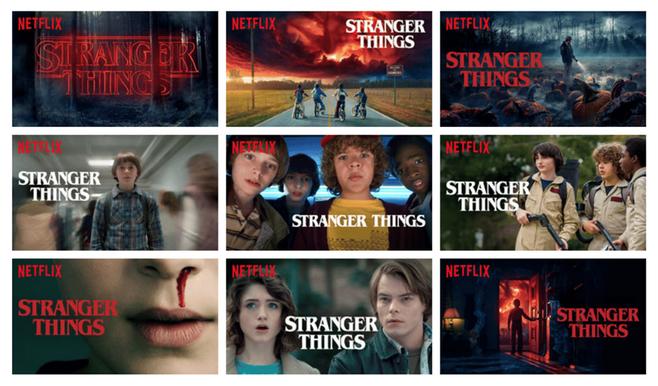
There are limitations and challenges to hyper-personalization. Indeed, there are three major limitations of hyperpersonalization which may lead us to think that its widespread use is no more than a theory. This includes limitations on the use of personal data, humans having a limited ability to process and comprehend massive amounts of data and data models/economic constraints, as well as the risk of diluting marketing and communication efforts. The first limitation can be addressed by companies by being transparent about how the customer data is being used. The second limitation can be solved by segmentation. It will provide a simple and understandable summary so that decision-makers can quickly and easily call for action.
Finally, hyper-personalization has financial constraints. On the one hand, segmentation is intended to facilitate the targeting of some prioritized customer segments, thereby balancing investments to guarantee efficiency like Marketing, Communication, and R&D. On the other hand, hyper-personalization is theoretically intended to provide brands with the ability to address the entire market while also meeting the specific needs of everyone within that market. Then there's micro segmentation, which appears to be inherently paradoxical in that it offers endless possibilities while not allowing for effective investment allocation to the business's most valuable customers.
Traditional marketing is becoming
enter the market. Within that intensely challenging digital marketing space, hyper personalization could help businesses cut through the clutter and provide consumers with precisely what they're looking for. Personalization's goal is to create personalized messages which enhance the significance of the content in order to empathize with users on a deeper level. Years of experience have demonstrated the importance of providing users with a unique experience in order to interact and truly connect. As a result, personalization, like everything else, has evolved over time, and we are now talking about hyper-personalization.

"The time your game is most vulnerable is when you're ahead. Never let up."
- Rod Laver

Brand is a marketing idea that helps customers identify your business or product in a distinctive way. How significant is brand development, though? Do we even need
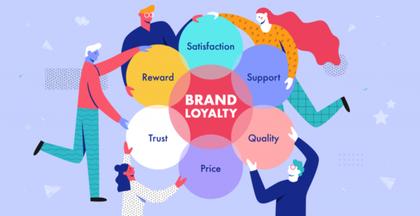
to spend money expanding and promoting our brand values? Yes, it is crucial to increasing your brand value in order to gain a competitive advantage. How would you choose a soap product, for instance, if you had gone to the grocery store to buy soap? The price of a packet of brandedsoap like Cinthol is 32 rupees, whereas a local brand soap costs 30 rupees. The majority of us are likely to prefer the branded soap packets, which cost two rupees more than the inexpensive local ones. However, have you ever questioned why you must pay more for famous names? This is due to the fact that a well-known brand includes not only the most crucial trait, "Trust," but also quality, service, and accountability. We specifically chose a product with a reputable brand above other unidentified comparable brands for this reason. Over time, brand loyalty is formed from this trust. A company's brand can help it stand out from the competition According to the latest survey 86 percent of customers are ready to pay more for premium service. Although we are aware of the necessity and importance of branding, how can we help the organization increase its brand value? Building a brand's reputation takes time, and if something goes wrong, it may all be destroyed suddenly. It is difficult to maintain brand loyalty when consumer preferences are changing rapidly, especially in this digital age. What keeps customers coming back is brand loyalty. Here are some ideas for enhancing brand loyalty and reputation.
Listen to the customer - Everyone enjoys having their viewpoint respected and seeing their suggestions put into practice. Consideration of consumer feedback fosters brand loyalty. Consider the early success of the Oneplus brand as an illustration. They paid close attention to user comments in the Oneplus forums and incorporated their advice while designing new goods. Despite the fierce competition in the smartphone market, this tactic allowed Oneplus to stand out from other competitors. It assisted Oneplus in building a base of devoted clients who would be willing to purchase if a new variety was introduced. You need to act on what you hear as well as just listen.
Be Consistent - The consumer should have faith in the product's ability to consistently produce the same level of performance. Building confidence requires maintaining consistency in our offering. Customers are prepared to switch to other brands that promise dependability. Consistency is one of the most important aspects of creating great brands. Consider coco-cola as an example; it tastes the same anywhere in the world. Because of this, businesses value standardized tests highly. A minor change in the level of the product or service will cause the customer to reconsider their allegiance.
Respond to customers - Customers want businesses to reply to them right away, and they anticipate prompt resolutions. Companies spend a lot of money on customer service because of this. There are several occasions where businesses reply to Twitter questions or concerns from customers quite quickly. Quick responses of this nature raise client satisfaction and persuade them to stick with your business. Promote your brand - Brand awareness is increased by vigorous company promotion. Brand salience and trust in
people are further increased by brand awareness. To expand their presence and reach, businesses should use social media strategically. According to a recent Deloitte survey research, consumers who are social media-influenced are 4 times more likely to spend more on items. Companies should select trending celebrities and influencers who are appropriate for their product as brand ambassadors to advance their business. These brand promoters aid in developing solid connections between the business and its clients. What sets you apart from your rivals is your ability to build a strong brand. Building a brand name and maintaining brand values are both difficult tasks. The customer will not think twice about switching to your competitor if you are slow to adapt to their wants. Even if they were profitable, businesses like Nikon, Nokia, and BlackBerry have all perished as a result of irrelevance. Therefore, businesses should carefully develop their brand identity in a way that makes it both loyal and relevant.
"Happy customers are your biggest advocates and can become your most successful sales team"
- Lisa Masiello

































